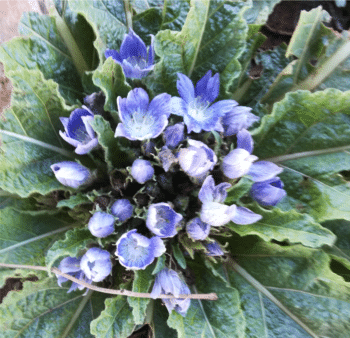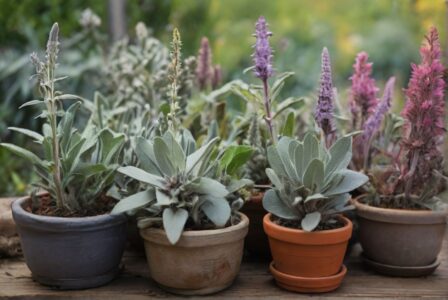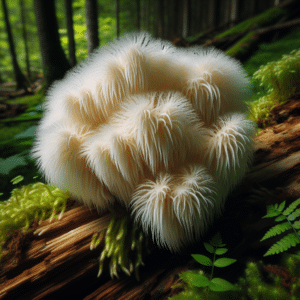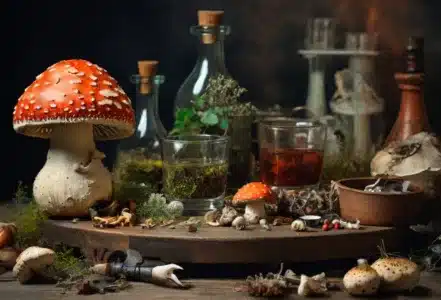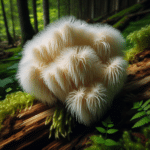- What is a mandrake?
- The history of the mandrake - myths and legends
- Symbolism and meaning of the mandrake as a motif in art, literature and music
- Elements of folklore surrounding the mandrake
- How is the mandrake depicted in different cultures?
- A look at the use of mandrakes in the modern witchcraft context
- Essential oils and herbs for making magical elixirs with mandrake extracts
- Healing powers of mandrake root: an overview of its possible applications
- Who should be wary of handling the roots?
- Conclusion - The magic of the mysterious mandrake root
HERE you can find our selection of different Mandragora seeds!
The mandrake
Welcome to my blog post about the fascinating mandrake! In this article, you'll learn everything you need to know about this mysterious root. From its history and symbolism to its use in different cultures and in the modern context of witchcraft. I'll also give you an overview of the healing properties of mandrake root and warn you of potential dangers. Immerse yourself in the magical world of mandrake and let yourself be enchanted by its mysterious charm.
1. what is a mandrake?
Mandrake is a mystical plant that has been used in various cultures for centuries. A mandrake is a root that often has human-like shapes and is used as a magic weapon or remedy. There are many myths and legends surrounding this mysterious plant, which have made it a popular motif in art, literature and music. The symbolism and meaning of mandrake are diverse and range from fertility and luck to death and destruction. In popular belief, the mandrake was often used as protection against evil spirits or worn as an amulet. Even today, mandrake root is still used in a modern witchcraft context to make magical elixirs or perform ritual acts. However, care should be taken as the root also contains poisonous substances. Not everyone should engage in the use of mandrake, as it can be dangerous for some people. Nevertheless, the magic of the mysterious mandrake root never ceases to fascinate us!
2. the history of the mandrake - myths and legends
Mandrake is a plant that has played an important role in folklore and popular belief for centuries. The mandrake root has a human-like shape and is often regarded as magical and mysterious. In many cultures there are myths and legends about the origin of the mandrake, often revolving around witchcraft and magic. One well-known story says that the roots can only be brought to life by the blood of a hanged man. Due to its symbolism, mandrake root has also often been used in art, literature and music. In the modern witchcraft context, it is still used today to make magical elixirs or perform rituals. However, care should be taken when handling the roots as they are poisonous and can cause severe poisoning. Nevertheless, mandrake remains a fascinating subject for anyone interested in folklore and magic.
3. symbolism and meaning of the mandrake as a motif in art, literature and music
In art, literature and music, the mandrake is often used as a symbol of power and magic. In literature, it is often found in combination with witchcraft or magic potions. For example, in Goethe's "Faust" it is used as an ingredient for a love potion or in E.T.A Hoffmann's "The Golden Pot" as a magical element for gaining knowledge and power. The mandrake motif can also be found in music, for example in Richard Wagner's opera "Die Meistersinger von Nürnberg", where it is used as part of a spell. The mandrake thus often symbolizes the dark side of life and is associated with the mysterious and forbidden.
4. elements of popular belief surrounding the mandrake
Elements of folklore surrounding the mandrake The mandrake has always been of particular interest to people. It was regarded as a magical plant and often associated with mystical powers. In many cultures it was regarded as a symbol of fertility, vitality and protection from evil spirits. According to popular belief, the mandrake root can only develop its full effect if it is harvested under certain circumstances. For example, you should tie up a dog and ask it to dig the root or observe the ritual of the phases of the moon. Carving a human-like figure from the wood of the mandrake root was also a popular ritual. This figure was then placed on the altar and used as a talisman to ward off evil spirits or bring good luck. There are numerous other customs and rituals in popular belief surrounding the mandrake that still exist today.
5 How is the mandrake depicted in different cultures?
The mandrake is depicted in different ways in different cultures. In Greek mythology, it is considered a protective plant that protects against evil spirits and brings good luck. In ancient Rome, on the other hand, the mandrake was used as a love charm and was regarded as a symbol of fertility. In Germanic mythology, the mandrake was a magical creature created from the blood of a hanged criminal and possessed a dangerous power. In the Middle Ages, it was associated with witchcraft and numerous supernatural powers were attributed to it. The mandrake also appears in Jewish tradition, where it serves as a talisman against evil. The depiction of the mandrake varies depending on the culture - from a human-like root to an animal-like creature.
6. a look at the use of mandrakes in the modern witchcraft context
A look at the use of mandrake in the modern witchcraft context Mandrake has a long tradition as a magical and spiritual tool. In the modern witchcraft context, it is often used in spells, rituals and elixirs to release its healing and rejuvenating powers. Mandrake root is particularly known for its protective amulet properties against evil spirits and negative energies. It can also be used to attract positive energy and promote good luck. However, the use of mandrakes in magical practices requires careful preparation and knowledge of their correct handling, as they can be potentially dangerous. It is important to note that the use of mandrake extracts should be for spiritual purposes only, as they should not be used to heal or relieve physical ailments. If you choose to work with mandrake, you should only use high quality products and ensure that you are using the correct techniques to ensure your safety. (This paragraph should appear at the end of the blog article).
7. essential oils and herbs for making magical elixirs with mandrake extracts
When it comes to the use of mandrake, many people first think of magical elixirs and potions. In fact, there are a plethora of herbs and essential oils that can be used in combination with mandrake extracts to achieve even more powerful results. Some of the most commonly used herbs include lavender, rosemary and thyme. Each of these herbs has its own unique property and can help support specific goals or intentions. Essential oils such as clary sage and juniper berry oil are also popular for their use in magical elixirs with mandrake extracts. However, it is important to note that this type of use of mandrake should be taken very seriously. The preparation of such elixirs requires in-depth knowledge of the interaction of different herbs and the dosage of the individual ingredients. Beginners in particular should therefore not venture into such experiments without careful consideration. All in all, it can be said that Using essential oils and herbs to create magical elixirs with mandrake extracts is a fascinating way to delve deeper into the world of witchcraft. However, if you are interested in doing this, make sure you are well informed and careful - this is the only way to achieve truly positive results!
8. healing powers of mandrake root: an overview of its possible applications
Mandrake is a magical root with a long history full of myths, legends and popular beliefs. But mandrake is not only used in witchcraft - its healing powers have also been used for centuries. The root is said to relieve pain, help with insomnia and can even be used to treat illnesses such as epilepsy. In traditional Chinese medicine, mandrake root is considered an effective means of strengthening the immune system and increasing vital energy. In Europe, too, it was often used as a panacea before being replaced by modern medicines. But be careful: mandrake root is poisonous and can lead to serious poisoning if used incorrectly. Therefore, only experienced herbalists should attempt to use it or, even better, use ready-made preparations from the pharmacy. But those who dare can find a true source of strength in mandrake root - whether for spiritual purposes or as a natural alternative to conventional medicine.
9. who should be wary of handling the roots?
You should be extremely careful when handling mandrake roots. Some people are sensitive to certain plants and may develop allergic reactions. Pregnant women are also particularly at risk because some components of the root can trigger a miscarriage. It is also important to emphasize that the use of mandrake in witchcraft is not harmless. If you want to use mandrake in witchcraft, you should always consult experienced witchdoctors and never experiment on your own without the relevant prior knowledge. Mandrake has a long history full of myths and legends and has found a place in art, literature and music - but its effects remain mysterious and enigmatic.
10 Conclusion - The magic of the mysterious mandrake root
When it comes to mandrake root, there is a mysterious magic that surrounds it. Mandrake has been a fascinating subject of myths and legends for centuries. But even today it is still seen by many people as a symbol of power and protection. In the modern witchcraft context, the mandrake is often used to make magical elixirs. But that's not all: its healing powers are also valued and used. However, there are also precautions that should be taken when handling the root. In summary, it can be said that mandrake root has a special attraction for many people and is repeatedly used as a source of inspiration - be it in art, literature or music.
Note: The mandrake root is poisonous in all parts and should always be handled with care and kept away from children and animals! Any improper use could be fatal in the worst case!
Note: The information in this article is for informational purposes only and is not intended to replace the advice of a doctor or other healthcare professional. Always consult a doctor before using any new herbs or supplements, and always check that certain plants are legal in your country before growing them.

